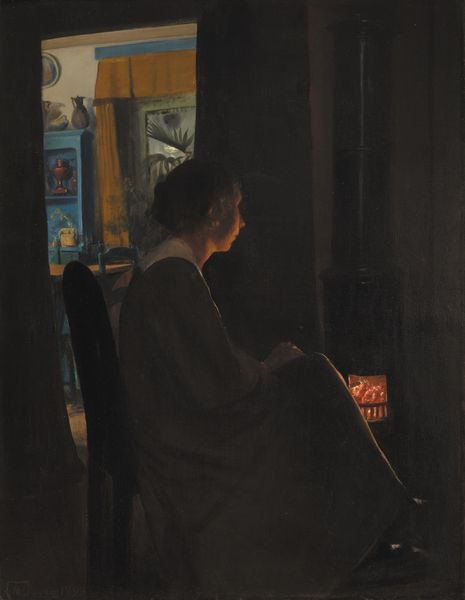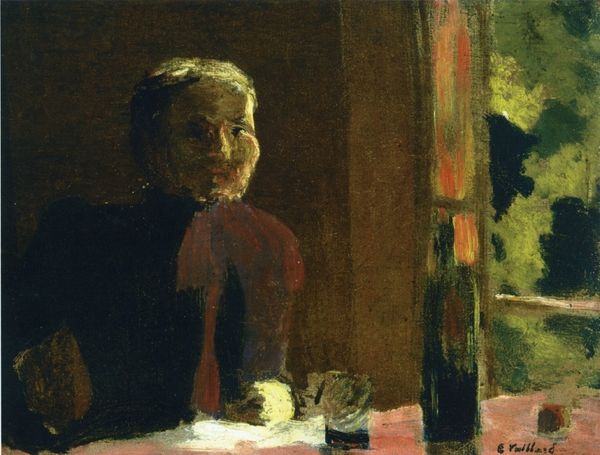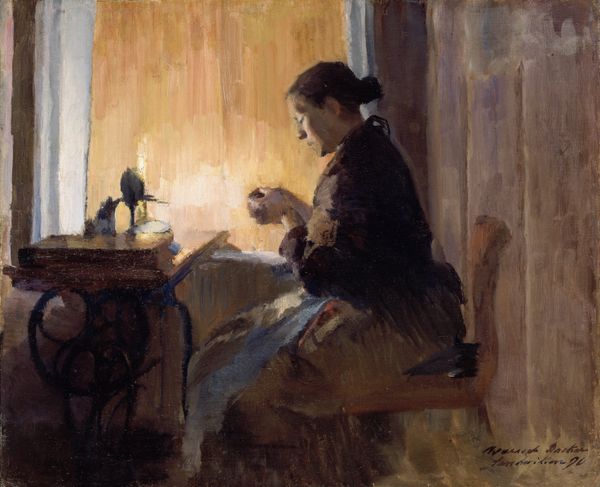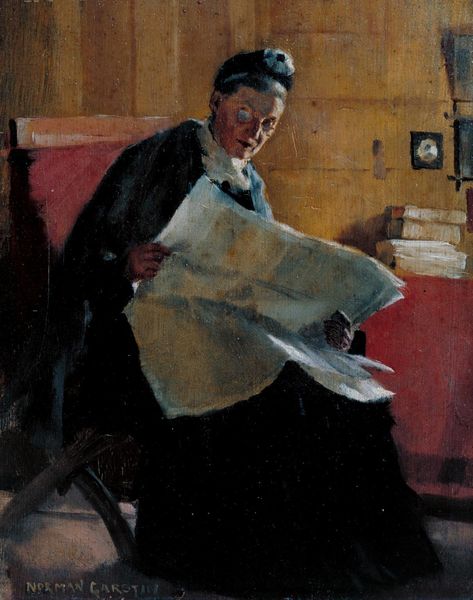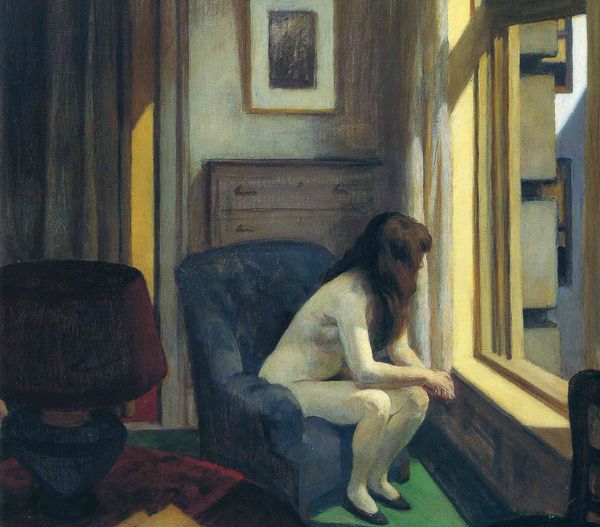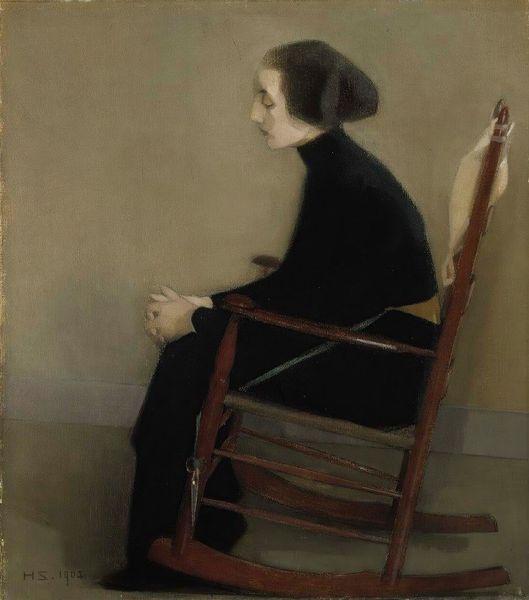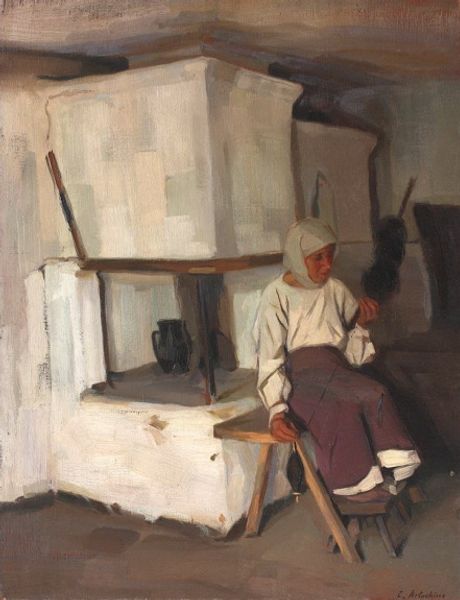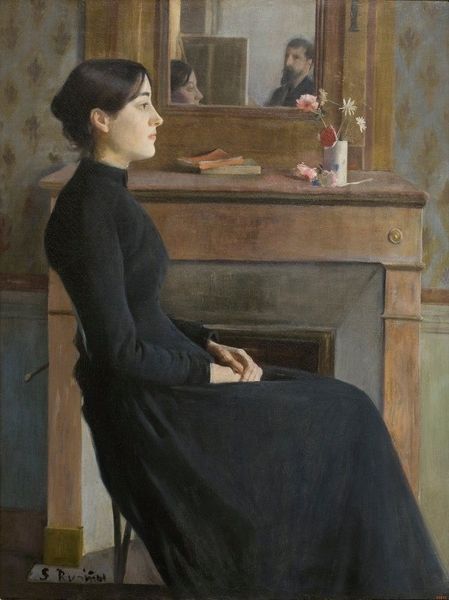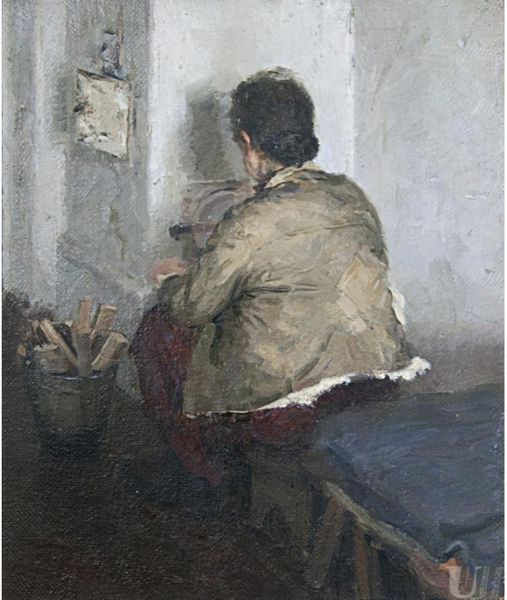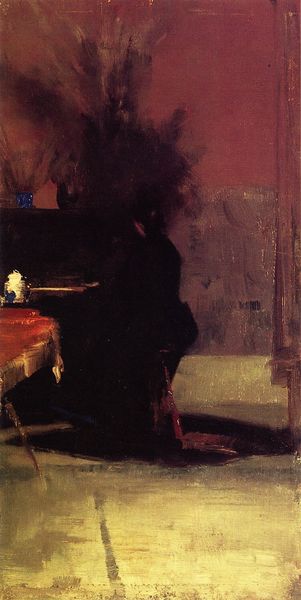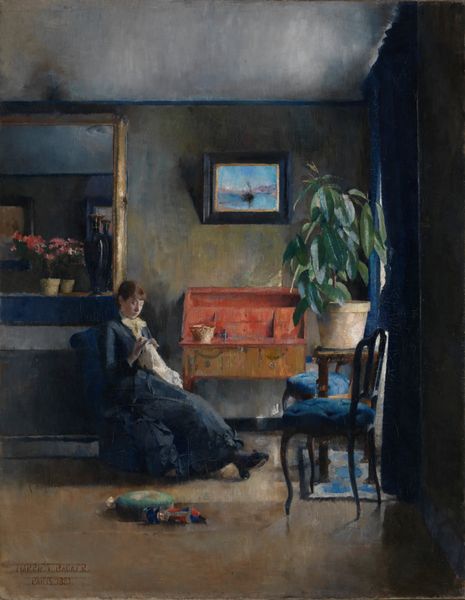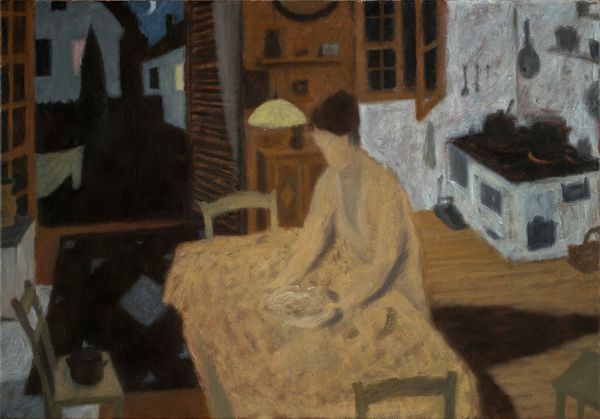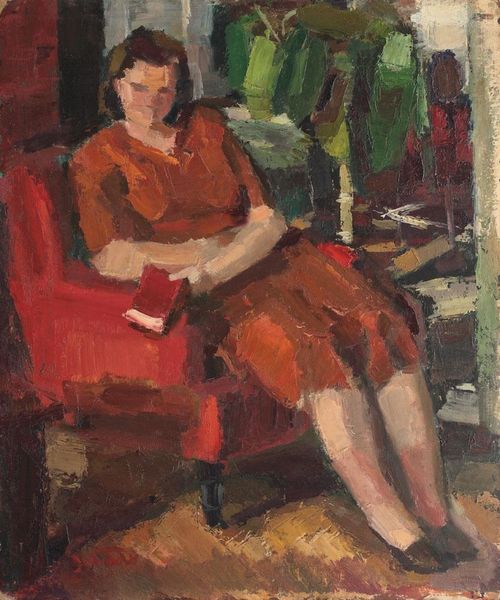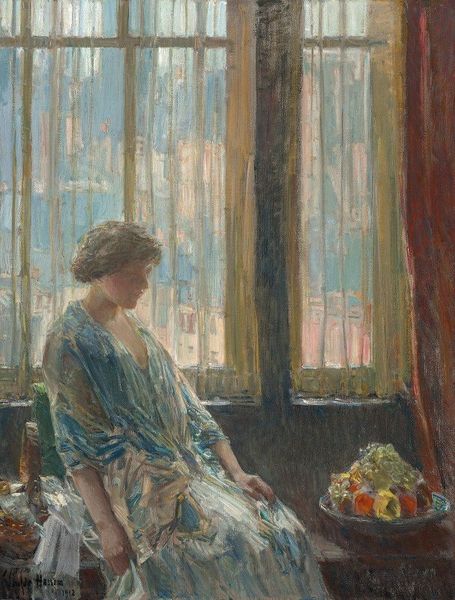
Copyright: Public Domain: Artvee
Editor: L.A. Ring’s 1898 painting, "Twilight: The Artist's Wife," rendered in oil, possesses a compelling intimacy. The darkness surrounding the woman almost feels protective, contrasted by the warm glow from the stove. What is your take on this scene? Curator: Considering the socio-political backdrop of late 19th century Denmark, I see a nuanced depiction of domesticity. The painting’s emphasis on the wife within the home can be seen as reinforcing the era's prescribed gender roles. What does the contrasting light and darkness suggest? Is she empowered or confined? Editor: It could be interpreted both ways! The light gives her a serene glow, almost halo-like, but the surrounding darkness does box her in. The interior almost looks like a stage setting. Curator: Exactly! How do the accoutrements visible through the doorway - the china, the textiles, the suggestion of plants, play into that narrative? Those objects define a certain bourgeois status, a comfortable, even beautiful captivity, perhaps. Are we invited to admire or critique? Editor: I didn’t think of the other room as adding to the ‘captivating’ feel of the artwork! It's unsettling now to realize the composition can represent conflicting positions like that. Curator: Think about who would be viewing this painting at the time. How would its intended audience understand the portrayal of this woman, the artist's wife, in this carefully constructed domestic sphere? It's an image deeply embedded in the societal expectations of the time. Editor: So, it is more than just a romantic painting of a cozy domestic moment, but a complex statement on societal pressures! This certainly made me see this piece from an entirely new perspective.
Comments
No comments
Be the first to comment and join the conversation on the ultimate creative platform.
